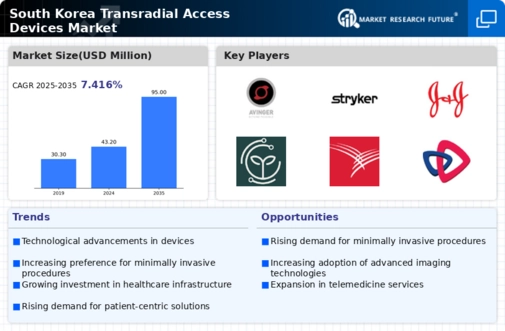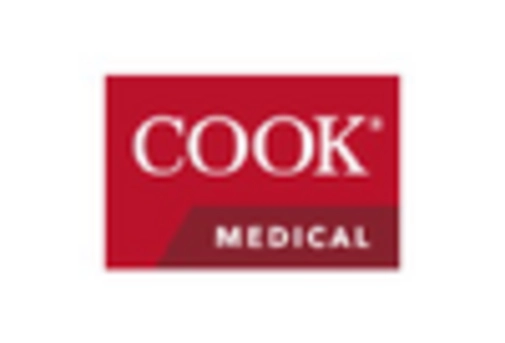Increasing Cardiovascular Disease Prevalence
The rising incidence of cardiovascular diseases in South Korea is a primary driver for the transradial access-devices market. As the population ages, the demand for minimally invasive procedures increases, leading to a greater need for transradial access devices. Reports indicate that cardiovascular diseases account for approximately 30% of all deaths in the country, prompting healthcare providers to adopt advanced technologies. This trend is likely to continue, as the healthcare system seeks to improve patient outcomes and reduce recovery times. The transradial access-devices market is expected to benefit from this growing demand, as these devices facilitate safer and more efficient procedures, aligning with the healthcare sector's focus on enhancing patient care.
Technological Innovations in Medical Devices
Ongoing technological innovations in medical devices are significantly influencing the transradial access-devices market. The introduction of advanced materials and designs enhances the performance and safety of these devices, making them more appealing to healthcare professionals. For instance, the development of ultra-thin catheters and improved hemostatic devices has led to better patient outcomes and reduced complications. In South Korea, the market for medical devices is projected to reach approximately $10 billion by 2026, with a substantial portion attributed to transradial access technologies. This growth reflects the increasing investment in research and development, which is crucial for maintaining competitiveness in the healthcare sector.
Rising Demand for Minimally Invasive Procedures
The growing preference for minimally invasive procedures among patients and healthcare providers is a significant driver for the transradial access-devices market. These procedures are associated with reduced pain, shorter recovery times, and lower risk of complications, making them increasingly popular. In South Korea, the healthcare system is adapting to this trend, with a reported increase of over 20% in the number of procedures utilizing transradial access in recent years. This shift not only enhances patient satisfaction but also aligns with the broader goals of healthcare efficiency and cost-effectiveness. As a result, the transradial access-devices market is likely to experience sustained growth as more facilities adopt these techniques.
Supportive Healthcare Policies and Reimbursement
Supportive healthcare policies and reimbursement frameworks in South Korea are fostering growth in the transradial access-devices market. The government has been actively promoting the adoption of advanced medical technologies through favorable reimbursement rates and incentives for healthcare providers. This approach encourages hospitals to invest in transradial access devices, as they can offer these services without incurring significant financial burdens. Furthermore, the Ministry of Health and Welfare has recognized the importance of improving cardiovascular care, which may lead to increased funding for related technologies. As a result, the transradial access-devices market is poised for expansion, driven by a conducive regulatory environment that supports innovation and accessibility.
Growing Awareness and Education Among Healthcare Professionals
The increasing awareness and education among healthcare professionals regarding the benefits of transradial access techniques are driving the market forward. Training programs and workshops are being implemented across South Korea to enhance the skills of medical practitioners in using these devices effectively. This educational push is crucial, as it not only improves the proficiency of healthcare providers but also instills confidence in the use of transradial access methods. As more professionals become adept at these techniques, the adoption rate is likely to rise, further propelling the transradial access-devices market. The emphasis on continuous professional development in the medical field is expected to yield positive outcomes for patient care and procedural success.




















Leave a Comment